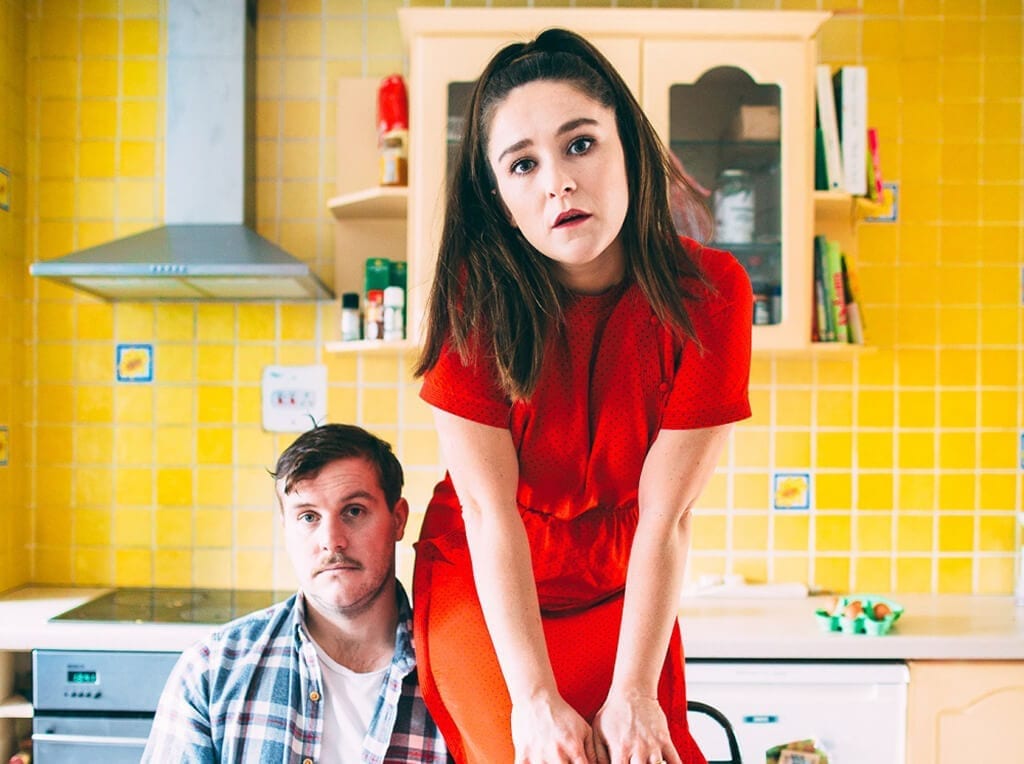When I listen to Bruce Springsteen I don’t feel like a loser. I feel like a character in an epic poem about losers.
So says Peter Coonnan in his opening monologue, setting the amusing yet ethereal tone for the next hour.
Recovery is the live staging of a pop concept album. The result is a unique combination of theatre and music. Four actors perform fifteen songs that revolve around a family experiencing life after a crisis. Music seems to allow them a way to communicate with each other in a less conventional, yet more successful way.
The lyrics deal with everything from the existential to the everyday (and the substantial overlap between the two). The smelly bins need to be taken out in one song, while in another the singing audience encourages a person suffering from depression to get up and ‘go for a walk’. The strongest moments embrace this blend between mundane and the spiritual: ‘Stop cooking that … You’re going to burn it Jesus’. A highlight is Stephen Quinn, dressed in a tight black dress, recounting the repressed memory of his character’s First Communion with a playful vulnerability that is hard to tear your eyes away from.
At its best, Recovery is transportative, innovative and moving. Ger Clancy’s set design is remarkable. A large, upright trampoline forms the backdrop for the piece. The play starts with a wonderful recording of Bruce Springsteen live in concert projected on to the trampoline’s drum. The elasticity of this piece does not end there, however, but is stretched as the four actors bounce of the walls, their energy overflowing into the audience.
Peter Coonnan’s opening monologue is a real highpoint. His delivery is taut, not unlike the trampoline he stands in front of. He speaks into a microphone while keeping one hand loosely placed on his diaphragm, making for an incredibly still, yet incredibly engaging, opening fifteen minutes.
Spratt’s thrashing solo ‘Take Me For A Dance’ exhibits such vocal and physical skill that it’s almost worth the ticket price alone. Aoife McAtamney’s choreography is strongest here, where Spratt’s shallow breath is heard around the theatre as the music fades but she continues to dance.
Jack Cawley’s sound design is worth a mention for its precision and ingenuity. Songs blend together seamlessly and playful touches, such as the chewing of digestive biscuits being heard eerily loudly, really add to the overall impression the show leaves on audiences as they exit the auditorium.
I’m not going to ask for the play to be more narrative driven – that’s not its intention, and its strengths lie in its open-endedness. But perhaps the piece needs a little more coherence. The different mediums (the movement, the projection, the music, the lyrics) are all wonderful as individual components, but maybe they should mimic their actors and try harmonizing.
If you are up for something a bit different in Dublin this weekend, you should absolutely go and experience Recovery.

